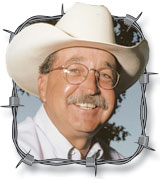There is an old adage that spring travels north at ten miles a day. Last week Pat and I drove to Magnolia, Arkansas to speak to a library group and taking Highway 71 south to Texarkana. We could see that spring does travel northward at that rate. Driving down to that border city and then 70 miles southeast almost to the Louisiana line we noticed several things on our way.
That timber and pulp wood industry is a big part of the economy of southern Arkansas. The odor of the wood pulp plants rivals chicken house cleanout, only I guess I am prejudice, chicken houses somehow don’t smell that bad. The poultry industry goes on down there too. Lots of the smaller farm setups that have been phased out up here are still growing birds for the companies in south Arkansas and north Louisiana.
I did notice the quality of most beef herds in that region was much less than we see routinely up here. There were some good cattle, several straight Brahma cows who can stand the heat and insects. But I noticed lots of herds that were what I called rainbow cattle. Even the bulls with these cows looked like they did – mulkedy-dun, was what an old cowboy I knew named Wils Smith would have described their breeding. They weren’t those brindle-whiteface cattle, these looked like dairy stock mixed. You know you can grow one good calf and make more money than you can off three of those calf producers. Plus you'd only have one cow to feed instead of three.
I guess if they’d wanted information on how to better manage their herds they’d asked their county agent.
They now have the Canadian thistle that far south and do you know it has already bloomed and gone to seed down there? That bugger has spread south in a hurry. I even saw a large patch in the Big Horns a few years ago west of Buffalo, Wyo. Some elk hunter brought weedy hay out there to feed his horses I bet. Most western states have hay inspection stops now. But it is too late, the thistle and other noxious weeds are already out there.
I spoke at the University of Southern Arkansas. This is a very clean, neat campus, with lots of expansion going on. The student population is around 3,000, so it is a smaller school of course than most of ours, but it has an agri department. They milk a large herd of cows, and do pasture and crop research. Class size tends to be small – 20 students per class and that’s an ideal learning environment. They support a big rodeo team, a practice arena and big stables, I saw all those horse trailers, many with living quarters, all lined up – there must be a big group that rodeos.
Long ago in my days at college rodeo, we had a ten year old pickup with stock racks we’d welded back in high school FFA and carried our roping and dogging horse in it. He had to do all of the events. We couldn’t have afforded any more than one, or fit the second one in the narrow truck bed for a very long haul. The SAU team members looked better supplied.
Their beautiful library came through the Don Reynolds Foundation. And this luncheon I spoke at was for the donors and friends of the university library. They were a great audience and they laughed when I mentioned how impressed I was with their rodeo effort compared to my experience. They asked me about when Marilyn Monroe and I made a movie together (I’ve told some of you about my extra actor experience in making “Bus Stop” with MM.) They found out via an Arkansas Democrat column writer. When asked if I was ever a bull rider – I said no, I simply got on them. Six feet two inches is too tall to be a bull rider. I wound up my speech and I believe 90 percent of them bought a copy of my latest novel, “The Sundown Chaser.”
Western novelist Dusty Richards and his wife Pat live on Beaver Lake in northwest Arkansas. For more information about his books you can email Dusty by visiting www.ozarksfn.com and clicking on 'Contact Us' or call 1-866-532-1960.






